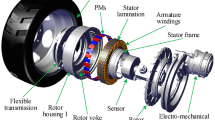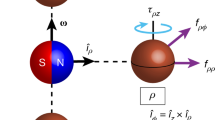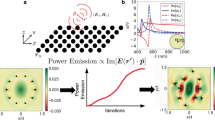Abstract
IN a recent experiment1 a disk of high dielectric constant material (barium titanate) was suspended as a torsional pendulum in an intense axial magnetic field. It was found that if a radial electric field was applied to the disk in time quadrature with the magnetic field a substantial torque was produced which, to within experimental accuracy (<5%), was in agreement with a force density Ṗ×μ0H in the disk. The surprising feature of the torque was that it had a time average, contradicting the ‘Abraham force’ which predicts a force density of ∂(P×μ0H)/∂t with zero time average. The experiment seemed to suggest that the quantity Ṗ×μ0H does not produce a force since its time average would be equal but of opposite sign to the time average of Ṗ×μ0Ḣ.
This is a preview of subscription content, access via your institution
Access options
Subscribe to this journal
Receive 51 print issues and online access
$199.00 per year
only $3.90 per issue
Buy this article
- Purchase on SpringerLink
- Instant access to full article PDF
Prices may be subject to local taxes which are calculated during checkout
Similar content being viewed by others
References
Walker, G. B., and Walker, G., Nature, 263, 401 (1976).
Author information
Authors and Affiliations
Rights and permissions
About this article
Cite this article
WALKER, G., WALKER, G. An unusual electromagnetic surface force. Nature 265, 324 (1977). https://doi.org/10.1038/265324a0
Received:
Accepted:
Issue date:
DOI: https://doi.org/10.1038/265324a0



